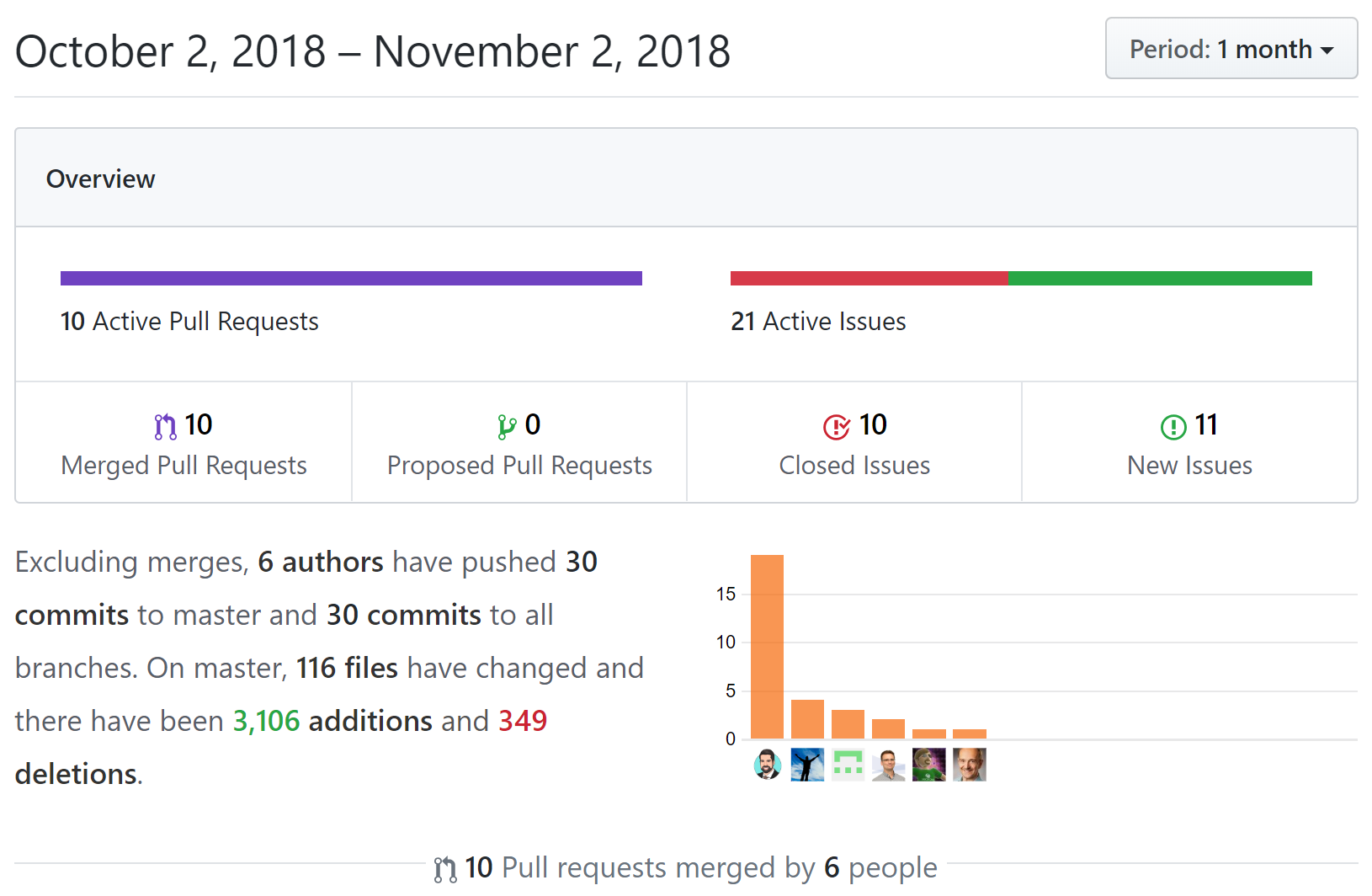Last time I wrote about how to configure Gradle to run behind a proxy with a local binary repository.
First, I have to say that I love twitter, because not long after I tweeted about the new blog post,
Read More
The open internet is a great place to code, but sometimes you are sitting behind a great firewall in a corporate environment. Your are not allowed to just pull the hottest stuff from the internet, but have to go through...
Read More
Every developer knows this problem - you work on a project and over time new versions of the configured dependencies are released. Sometimes it is even not that there is a new version, but it is the stable release you’ve...
Read More
Now that docToolchain handles your docs like your code, the next logical step is to add some automated tests.
That’s where htmlSanityCheck, a project originally started by Gernot Starke fits:
It is a gradle plugin which does some...
Read More
Sparx Enterprise Architect really shines when you use it to model your architecture by creating connections between elements. If you model your requirements, too, EA let’s you trace your design from the requirement up to the class.
Problem is, when...
Read More
Asciidoctor renders good looking HTML pages, but often you don’t have a server to publish the document for others to read. That’s why I render my documents as PDF or publish them to confluence. A single file can easily be...
Read More
Last week, I had the chance to attend a three day training on how to systematically improve software systems. It is called “IMPROVE” and is given by Dr. Peter Hruschka and Dr. Gernot Starke. The german description can...
Read More
If you describe a solution architecture, your document will be in an unfinished state for a long time. If you are on an agile project, your document will be a living one. There will be always open questions which need...
Read More
Today I will show how to add a change log to your documents. Git is quite good when it comes to log changes, so why not use git to add a table of changes to your document? If your version...
Read More
Up until now, the docToolchain build only generates HTML5 output. It looks nice, but sometimes you need different formats. For instance, when you want to share your architecture via mail, a single file format like PDF would be helpful -...
Read More
With the second blog post of this series, I already mentioned that I love AsciiDoc to create technical documentation, but I didn’t say too much about how to use AsciiDoc.
There is a simple reason for this - other...
Read More
Let’s recap what we did so far: in order to kickstart a documentation project, we’ve created a dual gradle / maven asciidoc build with included arc42 template in two languages and easy textual diagram drawing with planUML. That’s already quite...
Read More
Through the last blog posts, the build script advanced from a simple asciidoc example to a dual build asciidoc archetype with plantUML.
But when you want to document your project, you also need content. Wouldn’t it be great to have...
Read More
Let’s add PlantUML to our maven build. I’ll use a slightly different approach. For the gradle build, I referenced the asciidoctor-diagram ruby gem to be used. But there is also a .jar version of it which can be used....
Read More
Graphviz is cool to render diagrams and PlantUML depends on Graphviz. But Graphviz is also a command line tool which needs to be installed. You can run it as portable app, but what if your company does not...
Read More
In my blog post about why I love AsciiDoc, I wrote about the usage of plantUml in AsciiDoc. Today I will show you how to configure your Gradle build in such a way that a block like this
Read More
Last time we created a Gradle project to render an AsciiDoc file. But what if you can’t use Gradle but have to use Maven?
Let’s add a pom.xml to turn the project into a Maven project!
Read More
So I told you to use AsciiDoc to write technical documents because of all the great features.
Today I want to show you how to unleash the power and get started.
Gradle Integration
Let’s first start with Gradle. I...
Read More
Last time I wrote about why I don’t like Word, but I didn’t mention an alternative.
For me, AsciiDoc as markup format is a perfect alternative for technical documents. Together with the tooling provided by the AsciiDoctorJ community it...
Read More
Don’t get me wrong – MS Word is a great product for many use cases, but most of them are IMHO outdated (like writing a letter) and writing modern documentation is not a use case where MS Word shines.
Today...
Read More
There still seem to be some Java-Developers who are afraid of mixing their Java codebase with the power of Groovy.
Some time ago, it was a valid argument that the dependency to the groovy-all.jar would blow up the generated application,...
Read More
From time to time I stumble upon a web application which lets you write notebooks like the ones you know from Mathematica. They let you mix formatted text which explains your code with code snippets. The output of those snippets...
Read More
Bad news first: I guess I do not belong to the target group of the Wacom Bamboo Spark :-)
My week began with a Mail from Amazon telling me that there they have a special offer for one of...
Read More
When working in a web environment, you often have to transfer arbitrary data like lists or maps as String of the network.
The followin Gist shows how to solve this by serializing a list or map as JSON or YAML....
Read More
Zwei Tage Javaland liegen gerade hinter mir. Zusammen mit Tobias Kraft hatte ich die tolle Gelegenheit unseren Vortrag über Spock und Geb nochmal vor einem größeren Publikum vorzutragen.
Die zwei Tage waren natürlich vollgepackt mit Vorträgen, gutem Essen und...
Read More
A Grails project can quickly grow into larger applications. In order to still keep an overview, some architecture documentation is quite useful. One of the most useful diagrams to dive into an application is the domain class diagrams which shows...
Read More
In two previous posts (Grails3.0 & Grails2.2) I described how to use Spock-Reports with Grails 3.0 and Grails 2.2.
Now, if you try to use it with Grails 2.5, it seems not to work from the...
Read More
In a previous post I described how to use Spock-Reports with Grails 3.0.
That was easy since Grails 3.0 is Gradle based.
Now I will try to figure out how to use Spock-Reports with Grails 2.2.4 .
...
Read More
…but sometimes the tool makes a difference!
I just came back from an interesting 3 day workshop on which I had a first chance to make use of my drawing equipment I bought recently. Originally, I wanted to draw some...
Read More
Spock-Reports is a great way to create better reports for Spock.
Since Grails 3.0 is based on Gradle, integrating the Spock-Reports is easy. Just open your build.gradle file and...
Read More
Auf dem Entwicklertag Karlsruhe hatte ich zusammen mit Tobias Kraft mal wieder die Möglichkeit meine Ideen in einem Vortrag zu präsentieren. Mittlerweile ist sogar das Video zum Vortrag online.
In dem Vortrag geht es darum, wie man bei der...
Read More
The new template engine for the Spock-Reports-Plugin is out. Let’s build an asciidoc template with it.
Renato describes this step in detail on the Plugin Homepage. I’ve placed the properties file in
Read More
Since I experienced some problems when I tried to use the Spock-Reports-Plugin in Grails, I now tried to use it with Gradle.
The basics are easy and well described on the Spock-Reports page - just add the needed repository...
Read More
Just started my new blog. I’ve already had several blogs with more or less success, so why do I now start another? First of all because I don’t what to be a ghost developer.
Read More
This is just a test on how I could redirect old blog posts It seems that I need to have 40 words of abstracts in order to avoid a redirect from the overview page.
Oh, how much are 40 words?...
Read More



